The MC Tubarão X prototype is one of those racing cars that goes through several changes, including its name, with each new owner who acquires it. The story of this car begins with Horus, a long-term racing team based in Santa Catarina and sponsored by the air taxi company of the same name, whose pilots were Paulo César and Edson Machado. Initially competing in Brazilian Endurance races with a category IV VW Gol, in the early 90s the brothers created their own car, the Horus MV4 equipped with a Volkswagen VR6 turbo engine and Hewland transmission.
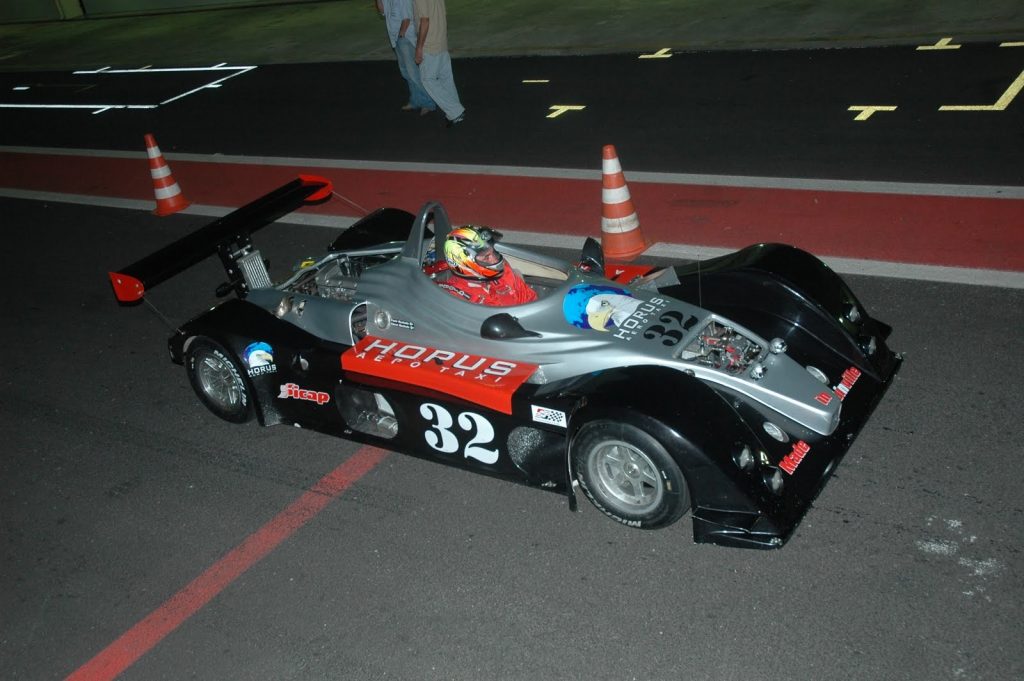
But in addition to this model, Paulo César Machado in 2010 revealed to the website corvettebrasil.blogspot that he had been working for around 7 years on another model equipped with a 7-liter Chevrolet LS7 engine to compete against the imported GTs that dominated Brazilian tracks at the time.
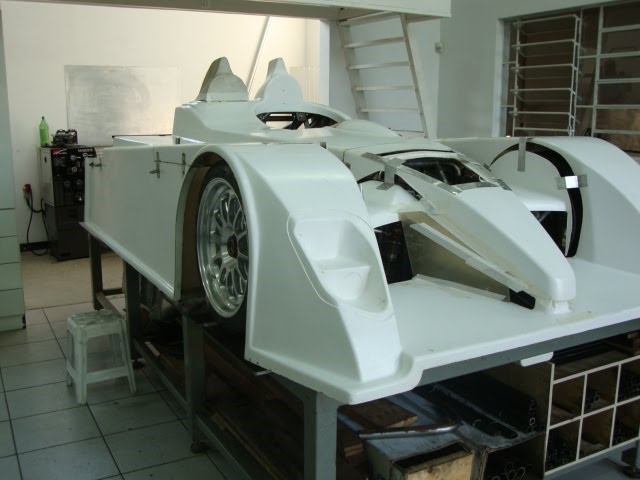
The debut of this car was scheduled for the 500 Miles of Londrina in the same year, but it actually only took place many years later, after the traditional Rio Grande do Sul team MC Tubarão had acquired the model, racing it for the first time at the 12 Hours of Tarumã in 2014. In this process, the car that would be called the Horus Máximo (Maximum), became known as Tubarão X (the 10th prototype in the long line of MC Tubarão prototypes), being piloted by the Sheer family and Geciel “Tiel” de Andrade. Still in free practice, the team suffered a serious accident that destroyed the front right section of the car, after running in oil left in the track by a competitor on the starting straight. Even so, the Campo Bom team managed to get the car ready in time for the race, and secured an impressive 2nd place in the general classification and in Category I.
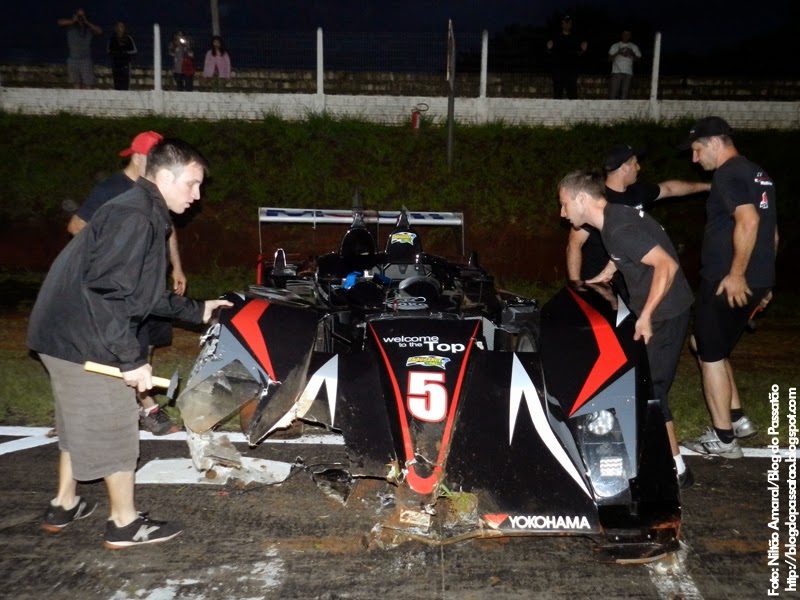
For the 2015 season, the Tubarão X was expected that the car would return to compete in the Gaucho and Brazilian endurance championships, however issues during the car development meant that for a good part of the season, the Sheer family returned to using their MRX prototype, while the MC Tubarão itself would be running the Tubarão IX. Finally, the return to the tracks took place in the 800 km of Pinhais, raced on the late Curitiba track, a race valid for the Copa Brasil de Endurance. After starting in fourth place in a race marked by intense rain, the team from Rio Grande do Sul was victorious after more than 5 hours of racing.

The same team of drivers would return at the end of the year to compete again in the 12 Hours of Tarumã, where problems relegated the team to 22nd place in the final classification. After this test, the Tubarão X was sold to the Sheer family, who renamed it simply the Proto V8.
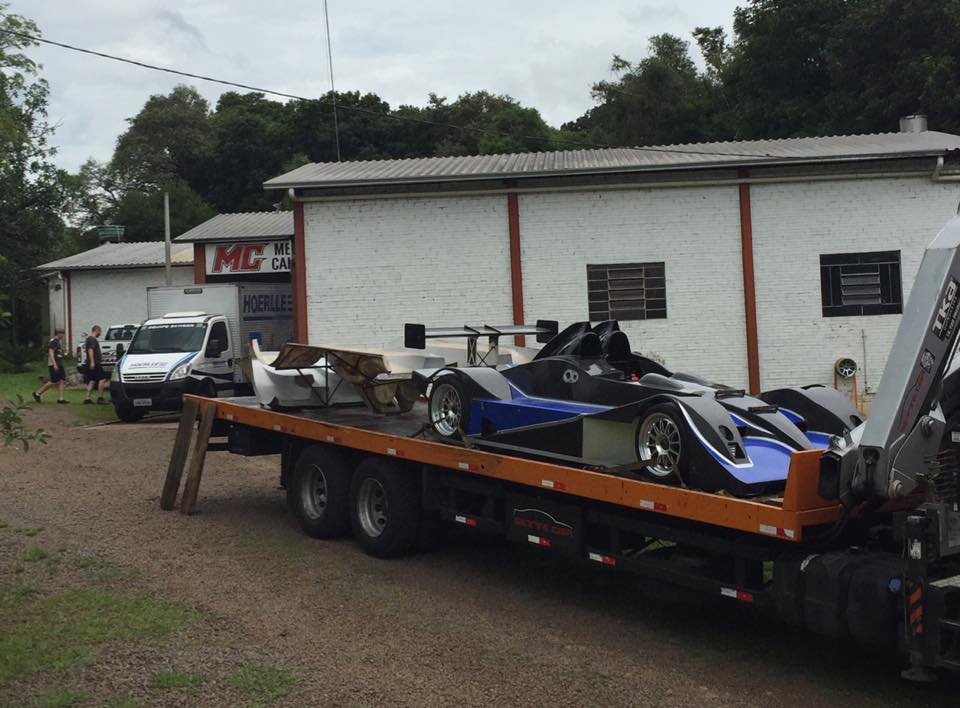
Now raced by the Hoerlle team, the prototype would return to the tracks only in the 3 Hours of Tarumã in 2017, the final stage of the Brazilian and Gaucho Endurance championships. Facing more modern models such as the AJR, Porsche 911 GT3 R and MCR Grand Am, the powerful model did not do badly, obtaining the seventh best time in the classification. In a race marked by rain and several safety car entries, the Sheer family managed to get their strategy right, and taking advantage of the good reliability of the model, managed to achieve second position overall and in the GP1 category, behind only the AJR #28 (this race also marked the first overall win for an AJR prototype).
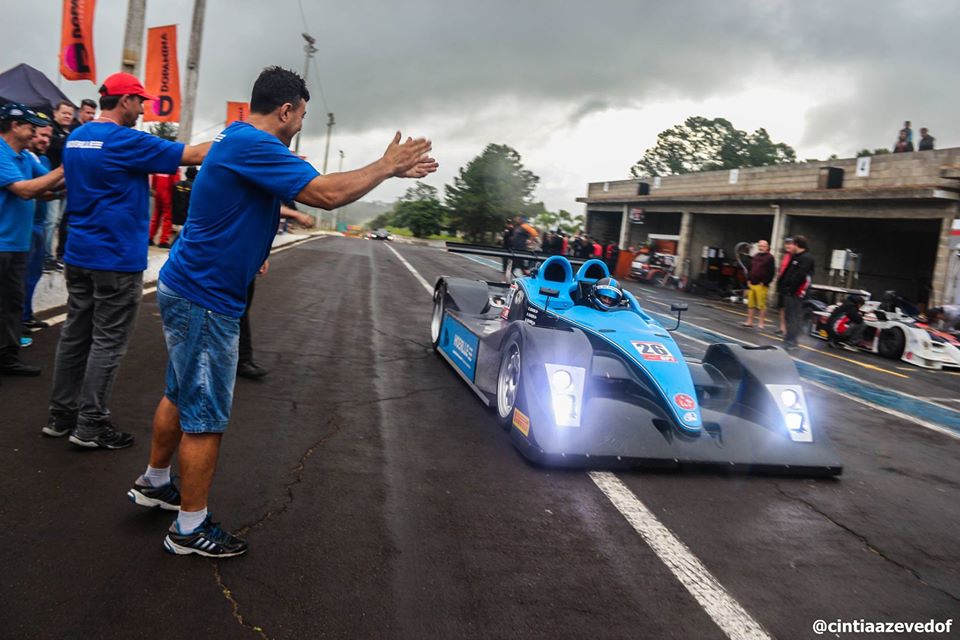
This good result, combined with the model’s reliability history, indicated promising performance for the 12 Hours of Tarumã. In qualifying training the team obtained sixth place in the GP1 category, below the car’s potential. In the race, the Scheer family achieved a good pace, always remaining in the top 5 until a fire broke out in car #26 at the exit of the pits, less than 1 hour before the end of the race. Still, the laps completed were enough for 7th position in the general classification, and 4th in GP1. For 2018, the Sheer family acquired an AJR prototype, representing the end of the line for the Proto V8.

The last news about the model dates back to March 2018, when its sale was announced by the Velocidade Curitiba website. Since then, the model has disappeared from the radar, but it would still be a strong competitor for the P2 category of Endurance Brasil or the Gaúcho Endurance Championship. Having told the history of the model, let’s now move on to the technical analysis:
Part 1 – Aerodynamics
The bodywork on the Tubarão X sought inspiration in some international prototypes such as the Acura ARX-01 B, also bearing some similarities with the tubeframe LMP1 prototypes from the 90s.
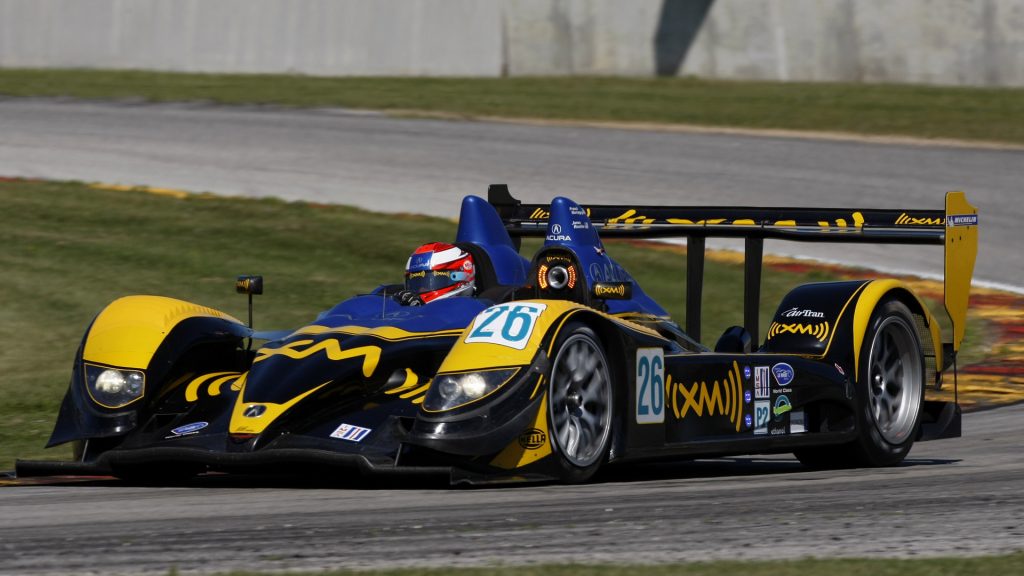
When the model finally made its first shakedown, the car featured a front splitter with a raised central region (1), two central air intakes with a square profile, apparently to direct air to cool the brakes (2), double Santo Antônio style Le Mans (3), scoops with a triangular profile on the rear fenders for cooling the rear brakes (4) and small rectangular inlets just in front of the scoops.
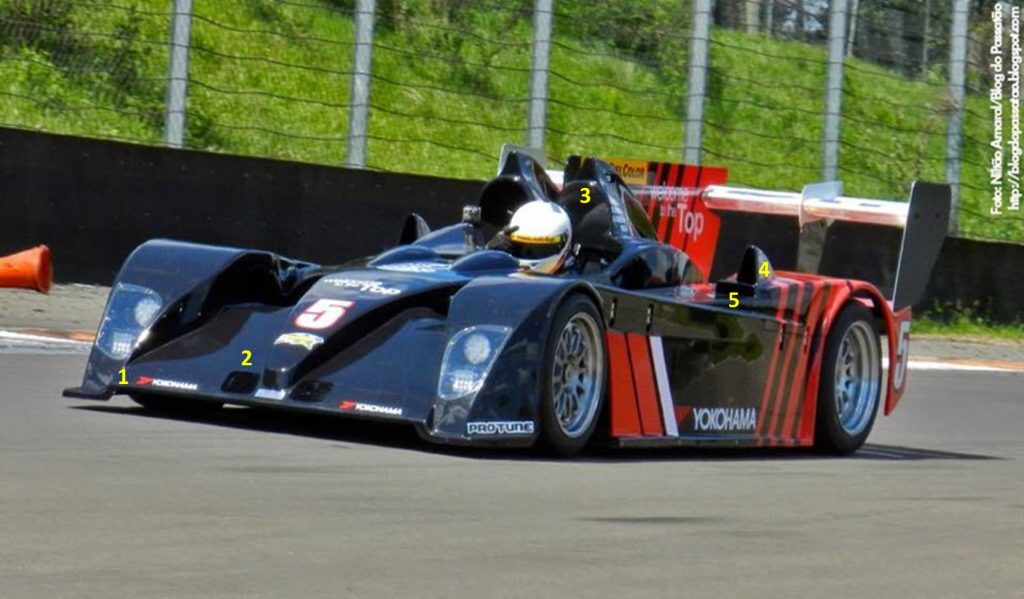
Furthermore, at the front you can see the air intakes for the radiators (6) and the air intake for the engine integrated into the roll hoop (7).
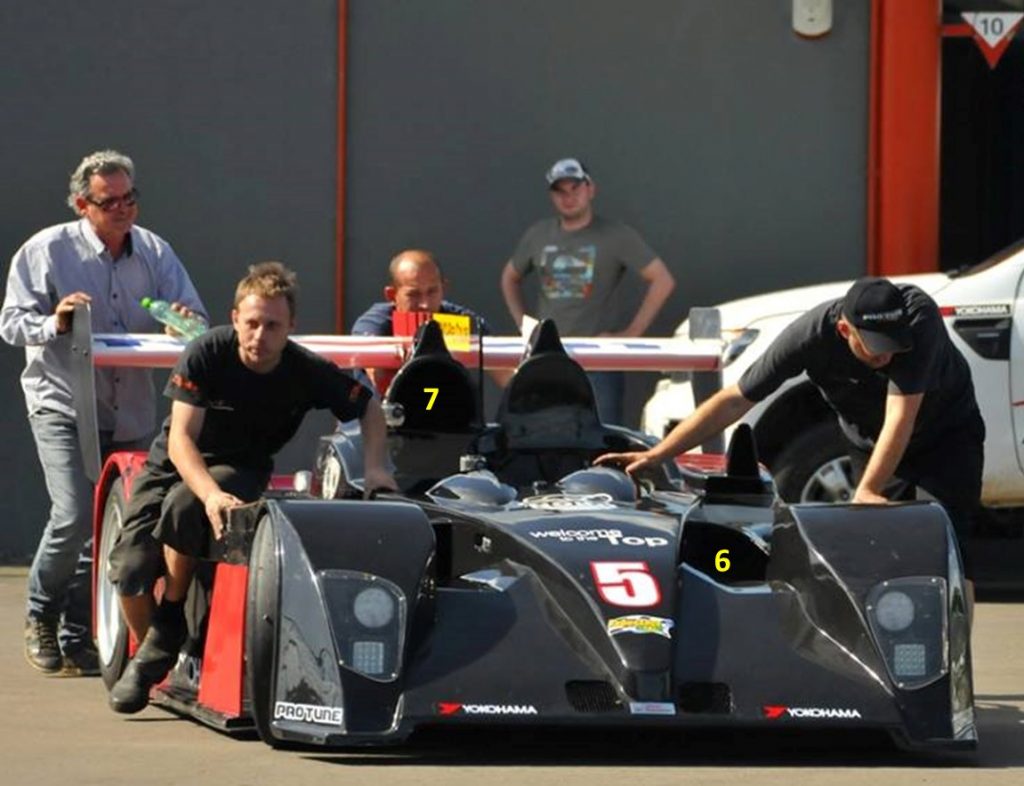
On the side, the shark fin (8) stands out, following the trend established by Le Mans prototypes, leading to the rear wing (9). This wing has a very robust profile, being supported by two central supports and two endplates (10) that practically join the main bodywork. Still at the rear, it is worth noting the rear diffuser (11).
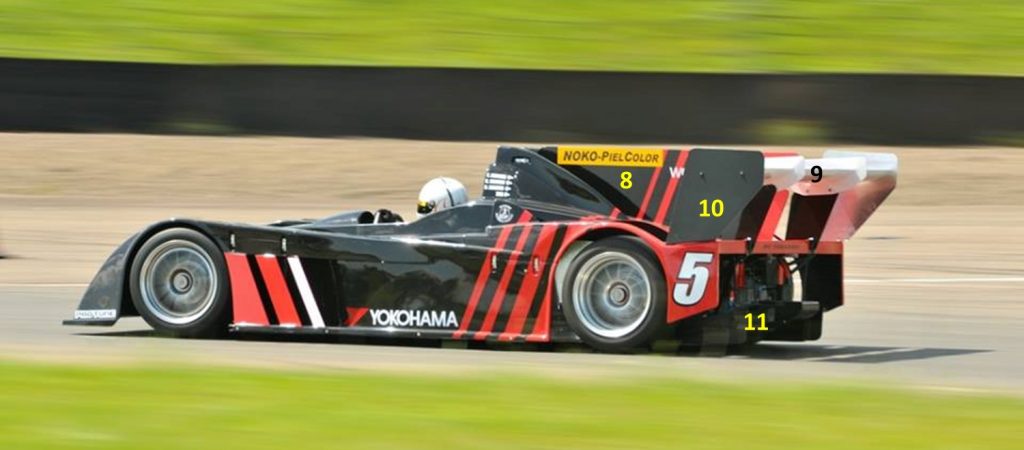
1.1 Aero updates
At the car’s official debut, at the 12 Hours of Tarumã, the MC Tubarão team had already promoted several aerodynamic updates. Starting again from the front section, the team’s quest to add downforce to the front becomes clear, as two pairs of generous canards (12) were added, with a side support (13) to add strenght to this set up, using as mounting base the also revised splitter (14). In this image it is also possible to see the bargeboards (15) just behind the rear wheels.
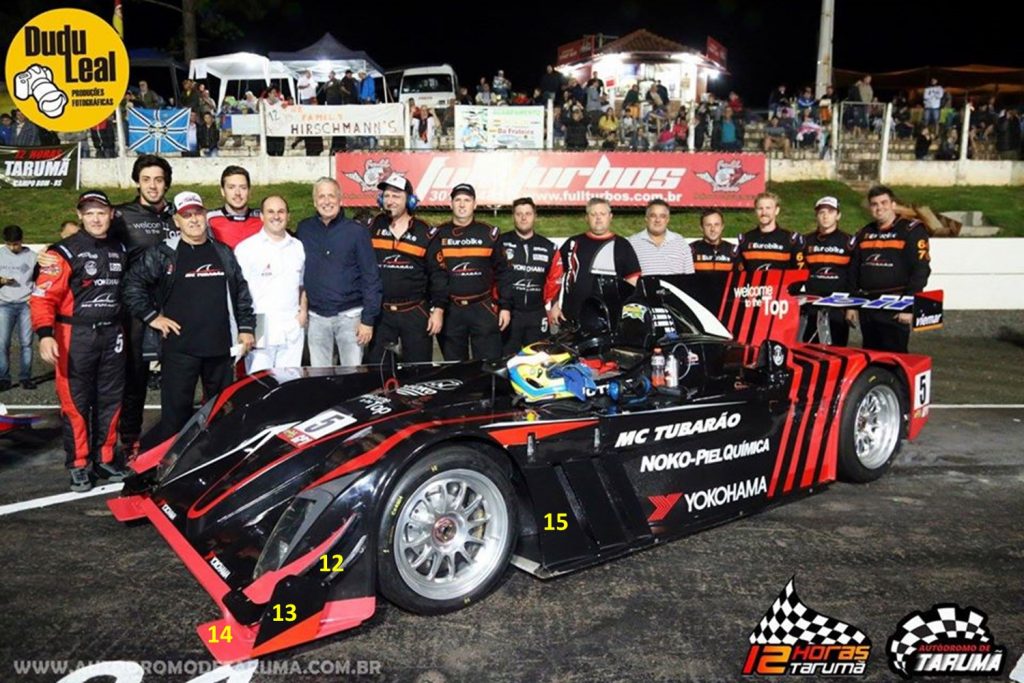
There were also changes at the rear end, with the team opting for a rear wing smaller than the width of the car (16), mounted in a much lower position and using supports completely different from the original ones. Furthermore, for the night race the Tubarão received the classic illuminated fin (detail).
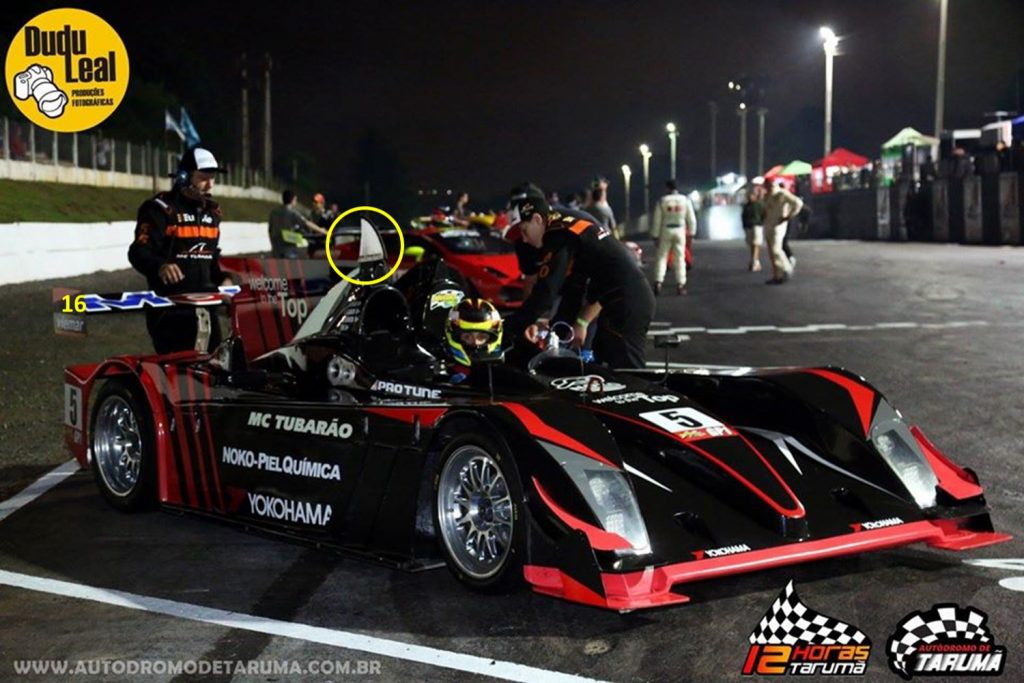
For the 800 km of Curitiba, the only visible update took place at the front, where the air intakes for the brakes changed position and started to adopt a NACA profile (17).
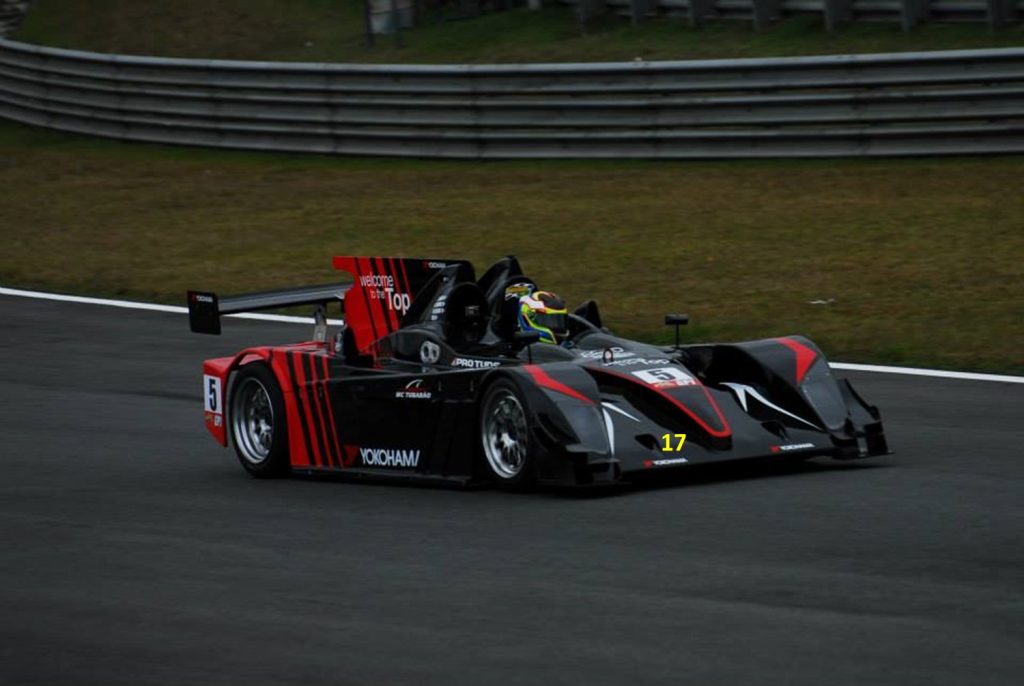
In this image of the rear, you can see the openings over the rear wheels (18) and the mass reliefs on the rear wing support (19).
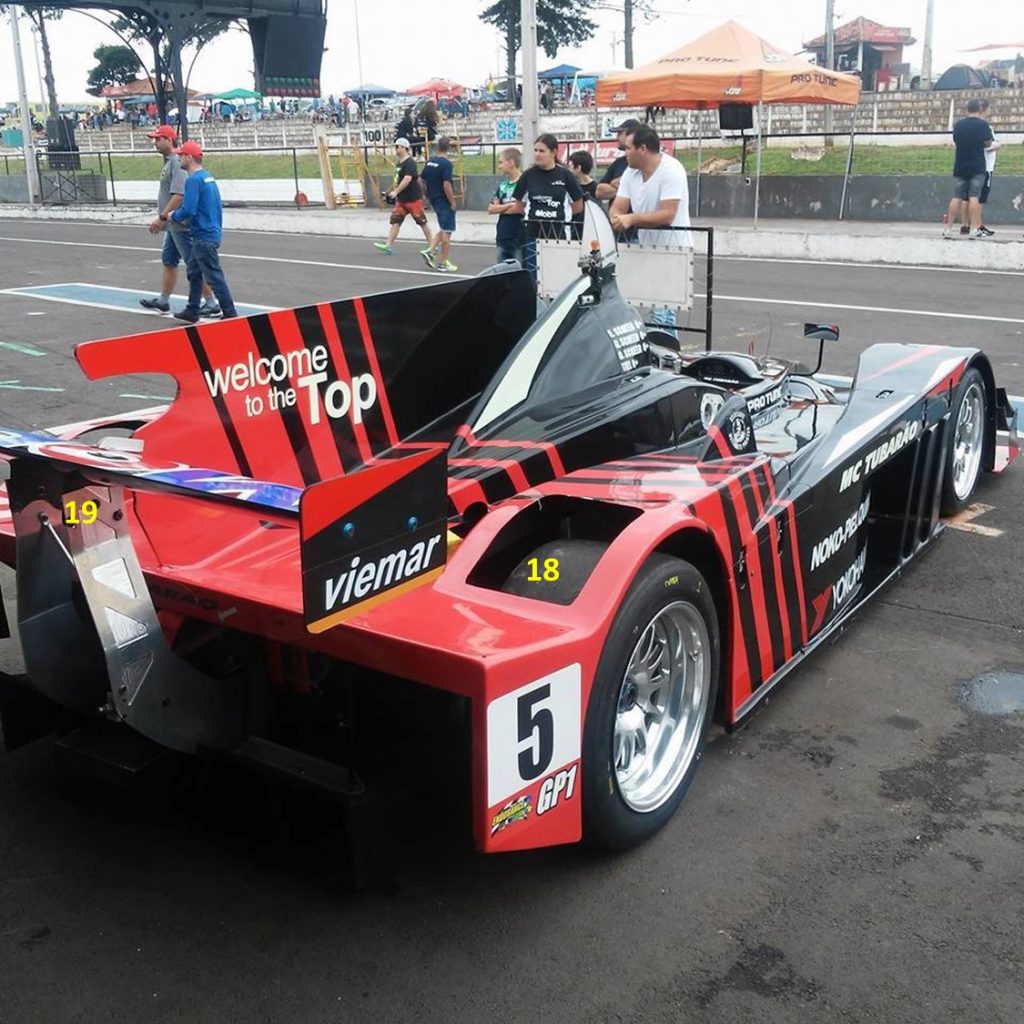
After the 12 Hours of Tarumã in 2015, the Tubarão The time off the track allowed the team to implement several aerodynamic updates, mainly on the front of the model, which was completely redesigned.

The completely redesigned nose received a blunter splitter (20), with a minimum air passage under the splitter (21) and the brake cooling ducts relocated maintaining the NACA profile but relocated to the central region of the car (22), close to from the original position. Furthermore, the sides of the fenders gained a more sculpted shape (23) and the headlights were completely redesigned.
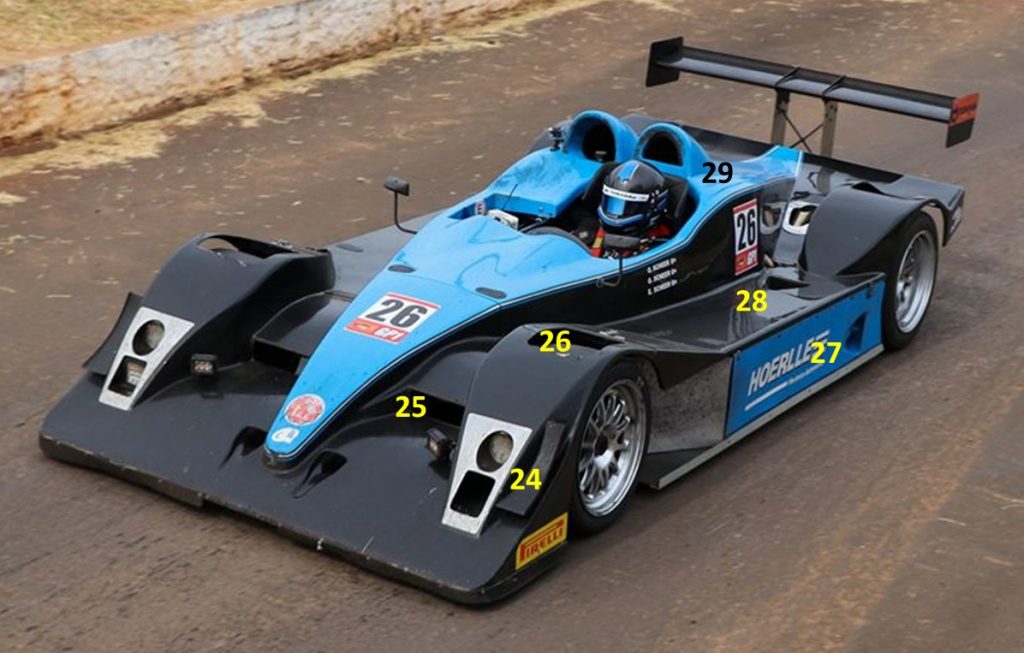
For the 12 Hours of Tarumã a canard (24) was added, in the eternal search for more front downforce. Another redesigned point were the air intakes for the radiators, which now receive air through an opening in the front (25), similar to that of the MRX prototypes. The front wheels also received ventilation openings (26), which were previously only present on the rear wheels. Moving to the side, the bargeboards were completely eliminated, as well as the scoops that directed air to the rear brakes and the air intakes on the sides. These items were replaced by NACA ducts on the side (27) and on the top (28) respectively, resulting in a reduction in the frontal area and consequently in drag. The engine fairing (29) was also completely modified, with a redesign of the Santo Antônio and elimination of the dorsal fin.
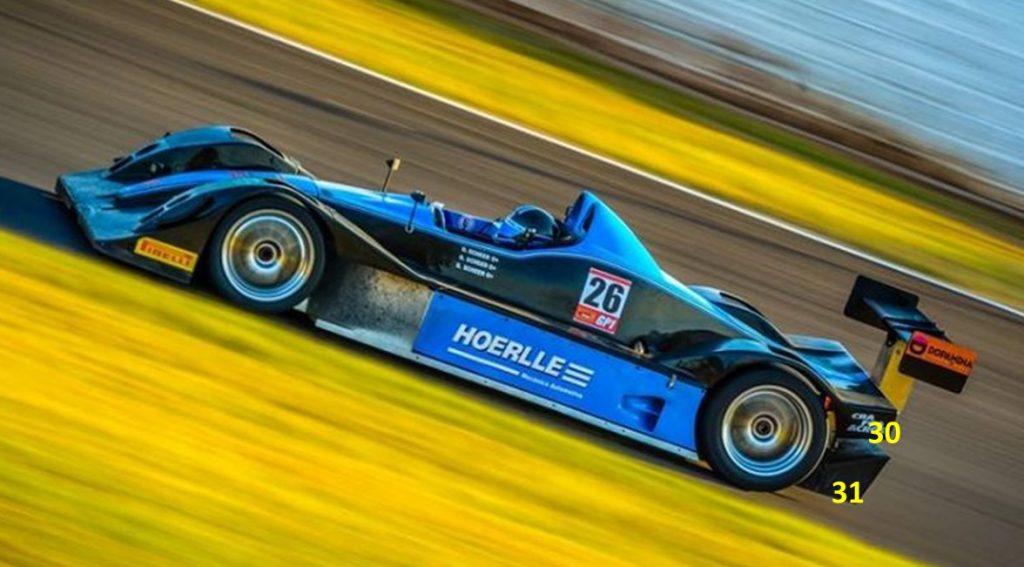
Finally, the rear bodywork was also modified, with a more abrupt cut (30), apparently to make room for a new and more generous rear diffuser (31). The rear wing struts have also been redesigned, while the wing itself appears to have remained unchanged.
Part 2 – Powertrain & Chassis
The Powertrain chosen for the Tubarão X was a 7-liter Chevrolet LS7 V8 engine, managed by a Motec M8 injection and prepared to produce around 650 hp. According to Paulo Machado, the engine was chosen because it is only 10 kg heavier than the VW VR6 used in the MV4, and is an engine that in the street version already produces 505 HP, making preparation work simpler while maintaining a good level of reliability. . Even so, if the power obtained was not enough, the original creators still planned to turbocharge the engine, to an estimated power of 1,200 hp!

To transmit all this force to the wheels, an Emco GA46-DP transmission was chosen, the same as the Daytona Prototypes, with capacity for up to 83 kgfm of torque.
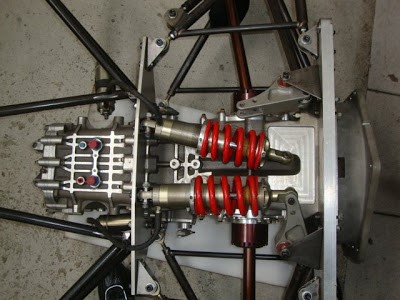
As for the chassis, it is a conventional tubular construction, with circular section 4130 steel tubes shaped in the survival cell. The fairing is entirely molded from fiberglass, resulting in a weight of around 850 kg.
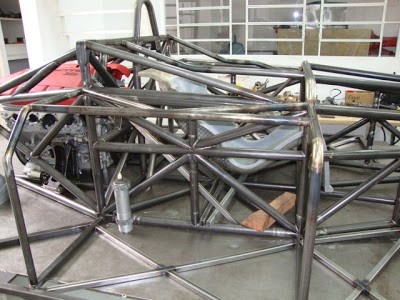
The suspension is completely inboard, with Koni shock absorbers and Hypercoil springs, while the braking system uses FREMAX steel discs with a diameter of 380 mm, with AP Racing calipers. The steering is WoodWard electro-hydraulic, and the wheels are 18″ FIKSE with a 12″ front and 13″ rear splint.
Race History
Below is the history of the competitions in which Tubarão X / Proto V8 participated:

You might also be interes in:

MC Tubarão XI / Sigma P1 (2022)
The Tubarão XI is the 11th generation of MC Tubarão prototypes, developed jointly with Sigma P1 for the Endurance Brasil.
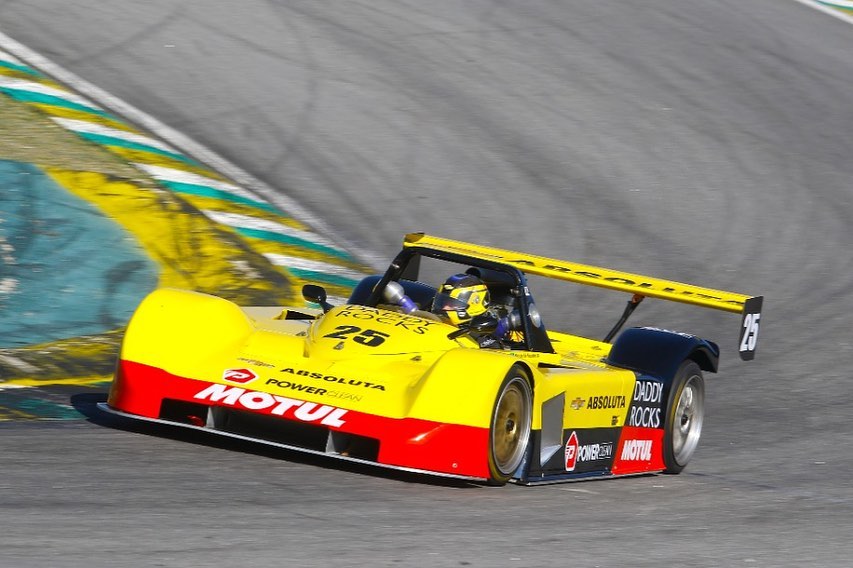
Absoluta ABS01 / Braspress Alfran 450A (2021 – )
The Absoluta ABS01 prototype is a project by João Alfran, and was originally built in 2005 for the Braspress team from Urubatan Helou. Now the project is given new life by the hands of Ney Faustini, to compete in the competitive P2 category of Endurance Brasil.

GT Racecars DIMEP GT R1 / GeeBee R1 (2008 – 2019)
Developed in the early 2000s, the GT R1 has a rich history, on and off the track.
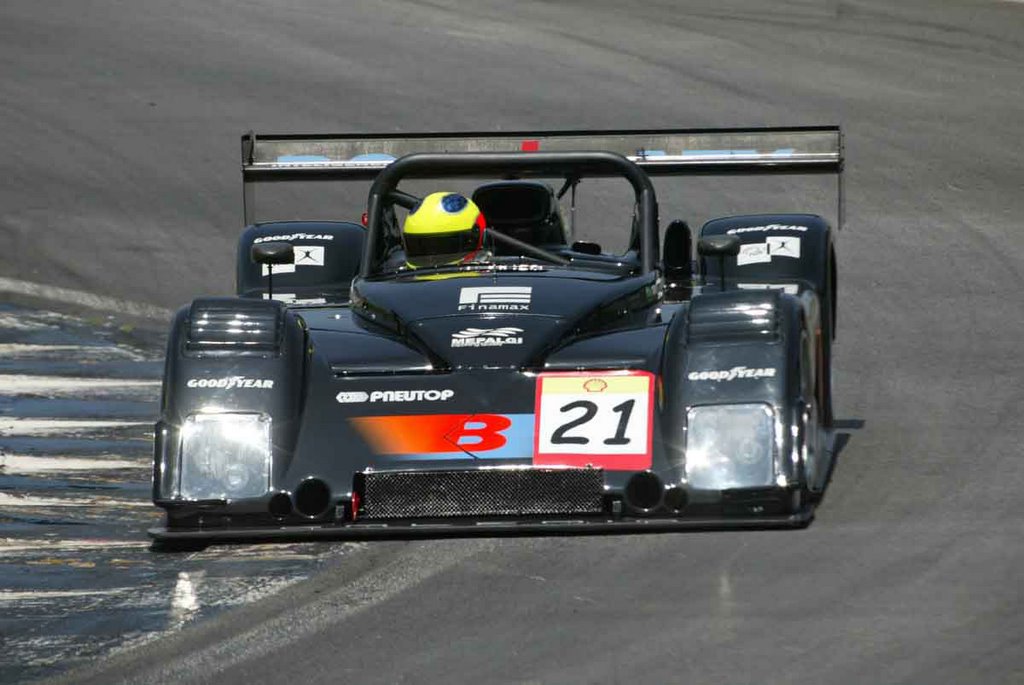
ZF01 (2004 – 2006)
The ZF01 was a Brazilian version of the American Riley Scott Mk III, produced under license by JL, now Giaffone Racing.
Sources:
Construindo um sonho Brasileiro com a força do LS7. Available at: http://corvettebrasil.blogspot.com/2010/09/construindo-um-sonho-brasileiro-com_13.html.
Tubarão X V8 7.0 vai tomando forma! Available at: http://www.blogdopassatao.com/2014/10/tubarao-x-v8-70-vai-tomando-forma.html.
MC Tubarão X V8 pronto pra dar suas primeiras braçadas! Available at: http://www.blogdopassatao.com/2014/11/mc-tubarao-x-v8-pronto-pra-ir-pra-pista.html.
Conheça o Tubarão X V8, que treinou hoje no Velopark! Available at:http://www.blogdopassatao.com/2014/11/conheca-o-tubarao-x-v8-que-treinou-hoje.html.
Treinos 12 Horas: MC Tubarão bate, mas já está sendo recuperado. Available at: http://www.blogdopassatao.com/2014/12/treinos-12-horas-mc-tubarao-bate-mas-ja.html.
Protótipo #26 à venda. Available at: http://velocidadecuritiba.blogspot.com/2018/03/prototipo-v8-venda.html?fbclid=IwAR0uplHErXrmAaoqzC4Ehdq1PAXdzT1iU8Ysjip3zvfgsXX6Ep4oCCobytw.
Images:
Taken from [1]: Construindo um sonho Brasileiro com a força do LS7. Available at: http://corvettebrasil.blogspot.com/2010/09/construindo-um-sonho-brasileiro-com_13.html.
Taken from [2]: Treinos 12 Horas: MC Tubarão bate, mas já está sendo recuperado. Available at: http://www.blogdopassatao.com/2014/12/treinos-12-horas-mc-tubarao-bate-mas-ja.html.
Taken from [3]. 800 Km – Endurance. Available at: https://www.facebook.com/endurance800km/.
Taken from [4]. MC Tubarão. Available at: https://www.facebook.com/mctubarao/.
Taken from [5]: Endurance Brasil. Available at: https://www.facebook.com/endurancebrasil/.
Taken from [6]: 12 Horas de Tarumã. Available at: https://www.facebook.com/12horasdetaruma/.
Taken from [7]: 2008 Acura ARX-01b. Available at: https://www.carpixel.net/pt/wallpapers/13068/2008-acura-arx-01b.html.
Taken from [8]: Conheça o Tubarão X V8, que treinou hoje no Velopark! Available at:http://www.blogdopassatao.com/2014/11/conheca-o-tubarao-x-v8-que-treinou-hoje.html.

